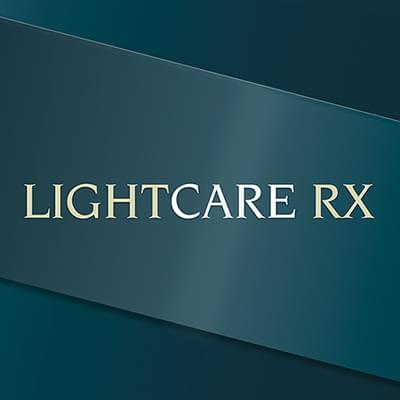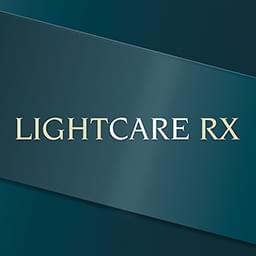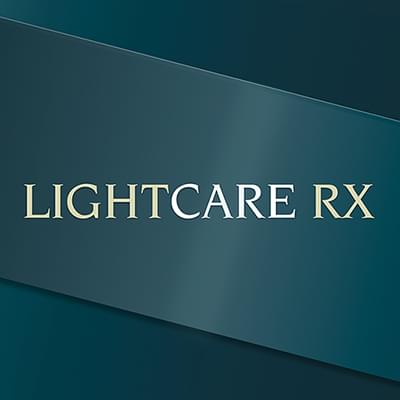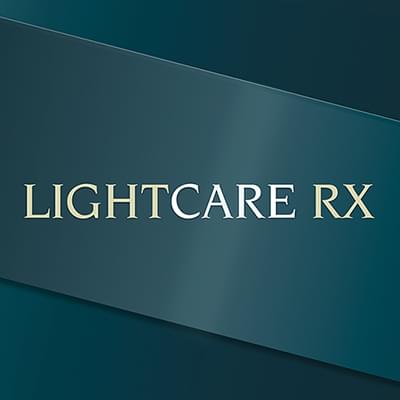
Frequently Asked Questions
Frequently Asked
About LightCare RX Red Light
About LightCare RX Red Light

Frequently Asked Questions

What Would You Like To
Know About LightCareRx
PBM Red Light Therapy?
What Would You Like To Know About
LightCareRx PBM Red Light Therapy?
Learn More About Red Light Therapy
What's Important? What's Not?

Questions About The Science Behind PhotoBioModulation
Near InfraRed Light Photobiomodulation Therapy has been under the focus of various medical disciplines since 1965. There are over 3600 published papers by various universities to prove the efficacy and the low risk factors of near Infra-red Photobiomodulation.
Specific studies and clinical trials can be found here.
Well, PhotoBioModulation (PBM) has never really been harnessed, developed and delivered like this before…until now.
A growing body of positive research and the continued evolution of delivery technology has combined to make PBM an efficacious alternative treatment for a wide variety of conditions. With the added benefit that it is no touch, non-invasive and non pharmaceutical.
LightCareRx is truly next generation cold light therapy –– PhotoBioModulation has come of age.
The actual wavelength of the light, not the source of the light, determines the light’s distance travelled and depth of penetration.
LightCareRx systems use the Near Infrared light spectrum from 600nm (nanometers) wavelength to 1200nm wavelength as it has been proven effective since 1965 to provide temporary pain reduction and the best outcomes.
The longer the wavelength the deeper the penetration with a limitation at around 1200m nanometers. Beyond that, tissue temperature will heat up.
The FDA recognized that if a NIR light device does not elevate the tissue temperature while Photobiomodulation in the 600nm to 1200nm range; it is considered a cold laser. The LightCareRx Systems are classified as cold laser.
Surgical and Dental Lasers utilize a laser device made to collimate a monochromatic wavelength of photons through lenses to increase the intensity to a point of quickly burning, evaporating the tissue.
Photobiomodulation is required to deliver lower tissue temperature to prevent injury while stimulating the mitochondria to elevate ATP production and building collagen and elastin fibers for healing at the cellular level.
Many medical surgery laser manufacturers had to reduce their wattage for reduced output in order to offer Photobiomodulation. Major manufacturers also realized that a single monochromatic wavelength was not able to bio stimulate every layer of the cells. That is how the word Low Level Laser Therapy (LLLT) became known –– which is a watered-down laser specifically made for Photobiomodulation.
The light source in all our Rx models is a proprietary Hyper Plasma Arc-Quartz Laser. The light spectral output is controlled by a metallic/glass filter system to band pass only the desired red and near infra-red rays that are known not to cause any harm. All systems deliver the same power and emit the same light wavelength, but they cover more area of the body as you go up in model size. We call this 3D penetration –– width coverage x length x depth. The RX1 has one light, Rx2 has two lights, RX3 has three lights and the RX6 has 6 lights.
We are considered a cold laser by the FDA as our systems do not heat tissue and are completely safe.
The light source for LightCareFx systems is a proprietary plasma-arc laser. The spectral output is controlled by a metallic / glass filter system to pass only the desired red and near infra-red rays clinically shown to be completely safe for humans.
All laser based light products are monochromatic which means that they can emit light at one particular wavelength. LED’s are quasi-monochromatic meaning they have a narrow band wavelength which can be as wide as ± 20nm depending on the quality of the LED and for each different wavelength they need extra LEDS which reduces the overall power output significantly.
LightCareRx uses a revolutionary Hyper Plasma-Arc/Quartz light system with a specially designed and patented filter system/power supply combination that has many peaks in a range of 590nm to 1250nm. The scientifically proven blend of different wavelengths is customized for the best results.
No. All of these technologies use “light” as the energy source, but the applications are highly different.
IPL (intense pulsed light) and Laser radiation therapies are considered as invasive treatments. IPL and Laser rejuvenation therapies work by thermally injuring the skin to induce a wound healing response. Although the wound healing response provides visible results, the damage may produce some inherent long term ageing effects. Patients may suffer from swelling, bruising or long-term skin damage.
A joule is a unit of energy.
Studies have shown that a Photobiomodulation treatment of just 10 joules in a day provided favourable results but most research claims 40 – 50 joules is the optimum. Our RX systems deliver approx. 2.6 joules per minute or about 50 joules in a 20-minute treatment.
More is not better, in fact, it has been shown that there is no additional benefit above 100 joules in a day. If you go over 300 Joules/day you may even notice diminished results.
Fat, oily skin, creams, skin pigment
Most hand held units are battery operated and are most suited for small treatment areas (limited to about 3-5 mm).
Here is an example of our RX1 compared to a typical Hand Held Unit.
Regenerative medicine goes beyond disease management to search for and discover therapies that support the body in repairing, regenerating and restoring itself to a state of well-being. Regenerative medicine is focused on developing and applying new treatments to heal tissues and organs and restore function lost due to aging, disease, damage or defects.

Questions About Classifications & Certifications
Yes, our light spectrum is scientifically proven and tested.
The active spectrum is a scientifically designed combination of 10 light wavelengths in the 590nm to 1200nm wavelength range to treat many conditions effectively and rapidly in a non-invasive manner.
There are multiple user safety systems in place such as an instant light shutdown safety switch which detects the proper filter installation in order to power the lamp.
In case of a removed filter or cracked damaged and shattered filter, the safety switch will instantly shut down the light. There is also an exterior safety acrylic sheet that is impact resistant and will prevent any physical damage to the filter and the light.
Each system comes with approved special eye protection and instructions on using the protection goggles.
No. The treatments are safe, non-invasive and cause no thermal damage or harm to the skin like class IV lasers and IPL are designed to do.
Yes, both by the FDA and Health Canada as a Class 2 Medical Device
Each ‘class’ pertains to the level of risk to your eyes, skin and body. The Rx Series is a Class 2 Medical Device, approved by Health Canada and the FDA.
Class 1 - 47% of approved medical devices are Class 1 Example: a band aid.
Class 2 - 43% of all medical devices fall under this category. FDA and Health Canada approval required. Example: powered wheelchairs
Class 3 - Medium to high risk- 10% of all medical devices fall under this class. FDA and Health Canada approval required. Example: hip implants, glucose monitors, invasive devises that are intended to be absorbed into the body.
Class 4 - Highest risk, surgically invasive devices. FDA and Health Canada approval required. Applies to a small number of devices. Example: cardiac pacemakers

Questions About LightCareRX Systems
Tables are not included.
We recommend an automatic table be used with the equipment for a few reasons;
1) you can lower it for handicapped or older clientele who have difficulty getting on a table
2) you only need to move the table to the appropriate height and the Rx equipment can remain stationary
3) You may prefer to use an existing treatment table
You will need enough room to accommodate these sizes:
• RX1 –– 18” Length x 21” wide x 48” High
• RX2 –– 42” Length x 40” wide x 60" High
• RX3 –– 46” Length x 40” wide x 60” High
• RX6 –– 96” Length x 30” wide x 90” High
• RX1 –– Voltage is 120 VAC, 60Hz, 15 amps
• Rx2 –– Voltage is 120 60Hz, 15 amps
• Rx3 –– Voltage is 220 Vac 60 Hz, 20 amps
• RX6 –– Voltage is 220V-240 VAC, 60 Hz, 30 amps
LightCareRx PhotoBioModulation systems are Hospital Grade and can be expected to provide many years of service with modest levels of routine maintenance:
• The steel and aluminum body parts have an indefinite life span
• Lights should be replaced every 500 hours (about once a year)*
• Contactors, capacitors, fans, timer, should be replaced after 5 years or 10,000 hours*
• Filters should be replaced every 2500 hours or every 5 lamp replacements*
• Wiring life expectancy is 12,000 hours or 7 years of operation.*
All wiring should be checked by a qualified technician every three years against any heat or other damage and replaced if necessary
• Ballasts should be checked for leakage at 10,000 hours (20 years)*
* These estimates are based on typical usage of 6 - 20 minute treatments per day for 52 weeks yearly. Experience may vary depending on usage hours.
Manufacturer's Warranty is one year. There are some restrictions.
Best Case: LightCare Rx systems is run on a dedicated electrical circuit.
Why? When in operation, LightCare Rx systems require a steady current without electrical spikes or sags (brownouts). A LightCare Rx system should never share an electrical circuit with any appliance which cycles on and off such as a refrigerator or air conditioner.
When in doubt, a qualified electrician should be consulted.

Questions About Best Practices
Make sure your clients are an 8 inch distance from the light
Yes Always. Eye Protection Googles Should always be used when receiving PhotoBioModulation treatment.
Any high intensity, bright light may cause damage to the eyes and should never be looked at directly.
To avoid any risk of damage to the eyes, each system is shipped with eye protection goggles that are in conformance to FDA Regulation 21CFR.1040.20 and CSA, CE, Health Canada requirements.
Each user should be provided with a new pair of goggles for their personalized use in order to prevent any cross contamination between users.
The exterior of the equipment and the front acrylic shield should be wiped clean periodically using a damp cloth in order to prevent any dust build up which may impede maximum performance.
Always unplug the equipment first before cleaning or other maintenance.
Yes. Optimally it is preferable to have clean skin with no makeup.
No. All jewelry must be removed before treatment.
No.
No. Contact Lenses cannot be worn during treatment.
Yes. PhotoBioModulation is safe for children
People with Pacemakers or suffering from Epilepsy cannot have a LightCare Rx Treatment. People with Pacemakers may have a red light treatment on a body part away from the chest area. Please consult your doctor before treatment.
WHICH LIGHT SOURCE IS BEST?
LIGHT SOURCE DOES NOT MATTER
Laser | LED | HyperPlasma
Each light source has some different characteristics but all create effective PhotoBioModulation

Laser
LED
HyperPlasma
First Generation PBM Devices
Creates 'HOT' Light
Light Is Pulsed
Creates 'COLD' Light
Light Is Pulsed
Creates 'COLD' Light
Light Is Constant
The LightCare Rx Series employs a HyperPlasma light source
WHICH TEMPERATURE IS BEST?
BOTH HOT & COLD LIGHT IS EFFECTIVE
First generation PBM devices were lasers and created a 'hot' beam. Today LED and HyperPlasma based devices create light which although not actually 'cold', is much cooler (and safer) than that created by first generation laser devices.
Although often still described as delivering 'cold light', these modern devices would more accurately be referred to as 'slightly warm light' devices.

Hot Light

Cold Light
Hot Light Created via Laser
Light Is Pulsed
Handheld Devices (narrow focus)
Cold Light created via LED
Light Is Pulsed
Typically Handheld devices (narrow focus)
Cold Light Created via HyperPlasma
Light Is Constant
Wide Coverage Devices
The LightCare Rx Series is a cold light PBM therapy
DO WAVELENGTHS MATTER?
Yes. Wavelengths Matter. Near Infra-Red Wavelengths Matter Most
Cells react to wavelengths differently so more active wavelengths means more cells are affected

Laser
LED
HyperPlasma
Good
1 Wavelength
(effects many cells)
Better
2-4 Wavelengths
(effects more cells)
Best
10 Wavelengths
(effects most cells)
The LightCare Rx Series provides 10 distinct near Infra-Red wavelengths
MEDICAL CLASSES - IS HIGHER BETTER?
No. Medical Classes have nothing to do with effectiveness
Each medical 'classifaction' denotes 'safety' not efficacy
← Lower Risk
Higher Risk →
Class 1 Medical Device
• Lowest Risk Class
• 47% of approved medical devices are designated as Class 1 devices
Example:
A Band Aid
Class 3 Medical Device
• Medium to high risk
• 10% of all medical devices fall under this class
• FDA and Health Canada approval required
• Invasive devises that are intended to be absorbed into the body
Example:
Hip Implant / Glucose Monitor
Class 2 Medical Device
• 43% of all medical devices are designated
as Class 2 devices
• FDA and Health Canada approval required
Example:
A Powered Wheelchair
Class 4 Medical Device
• Highest Risk, surgically invasive devices
• FDA and Health Canada approval required
• Applies to a small number of devices
Example:
A Cardiac Pacemaker
The LightCare Rx Series is a Class 2 Medical Device, approved by Health Canada and the FDA
IS COVERAGE AREA IMPORTANT?
Yes. The number of cells reached is critical. More cells... better results.
Small battery operated 'handheld' units cannot achieve results comparable to LightCare RX wide-area units
Narrow Area Devices
• Known as 'collimated' devices
• Best for small area targeted treatment
• Can be hot light (Laser) or cold light (LED)
• Most commonly 'handhelds' used in Chiropractic
• 1 wavelength (Laser) –– up to 4 wavelengths (LED)
Wide Area Devices
• Known as 'non-collimated' devices
• Best for larger area treatment
• Uses HyperPlasma generated 'Cold' light
• At use across a wide range of practice areas
• 10 wavelengths
The LightCare Rx Series is a wide-area PBM therapy –– offering the largest coverage areas in the world

